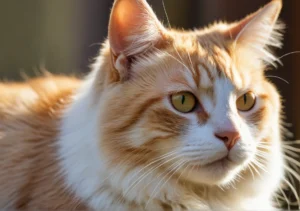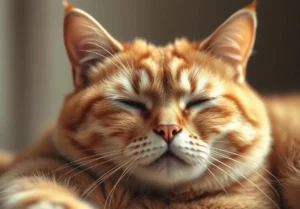Cats are fascinating creatures with many unique behaviors, one of which is their arms twitching. Have you ever noticed your feline friend’s limbs moving involuntarily while they are sleeping or even awake? If you’re curious about why cats arms twitch, you’ve come to the right place for answers.
Why Do Cats Arms Twitch?
Have you ever noticed your feline friend’s arms twitching inexplicably? Don’t worry, you’re not alone in this observation. The reasons behind why cats’ arms twitch can vary, but it’s essential to understand what these involuntary movements could signify about their health and well-being.
One common cause of twitching in a cat’s arms is dreaming during sleep. Just like humans, cats experience rapid eye movement (REM) sleep where their brains are highly active. During this stage, their muscles may twitch as they react to the dreams they are having. It’s a fascinating insight into the inner world of our feline companions.
Another possible reason for twitching arms in cats could be related to nerve issues or discomfort. If you notice persistent twitching or trembling in your cat’s arms, it’s crucial to consult with a vet to rule out any underlying health issues. In some cases, twitching could be a sign of pain or discomfort that requires medical attention.
Remember, each cat is unique, so if you notice your furry friend’s arms twitching, observe their behavior and consult a professional if needed to ensure their well-being is taken care of.
Common Triggers for Twitching
While dreaming is a common trigger for twitching in a cat’s arms, there are other factors that may cause these involuntary movements. Stress and anxiety can also lead to twitching in cats. If your feline friend is feeling overwhelmed or anxious, they may exhibit twitching as a physical manifestation of their emotional state.
Additionally, muscle fatigue or strain could be a culprit behind your cat’s twitching arms. Just like humans, cats can experience muscle fatigue from overexertion or strenuous activity. Providing your cat with a comfortable and relaxing environment can help alleviate any muscle strain and reduce twitching episodes.
Moreover, neurological conditions or injuries may also contribute to twitching in a cat’s arms. If you suspect that your cat’s twitching is abnormal or excessive, it’s best to seek guidance from a veterinarian to determine the root cause and provide appropriate treatment.
Remember to observe your cat’s behavior closely and address any concerns promptly to ensure their health and well-being. Your furry friend relies on you to keep them safe and happy.
Observing Your Cat’s Behavior
If you notice that your cat’s arms are twitching, it’s essential to closely observe their behavior to understand the underlying cause. Cats’ arms can twitch for various reasons, including dreaming, nerve issues, or even pain. Pay attention to when the twitching occurs – is it during sleep, playtime, or when they seem relaxed? This observation can provide valuable clues to help determine the possible cause of the twitching.
Additionally, observe your cat’s overall demeanor. Are they exhibiting any other unusual symptoms alongside the arm twitching? Changes in appetite, behavior, or mobility could indicate a more serious issue that requires immediate attention. By taking note of these details, you can better communicate the specific behaviors to your veterinarian, aiding in a more accurate diagnosis and treatment plan.
Seeking Veterinary Advice
While occasional arm twitching in cats is usually harmless, there are instances where seeking veterinary advice is crucial. If your cat’s arm twitching is persistent, severe, or accompanied by other concerning symptoms, it’s best to schedule a visit to the vet. They can conduct a thorough examination, potentially including neurological tests, to pinpoint the underlying cause of the twitching.
Additionally, if your cat’s arm twitching is a new development or progressively worsening, prompt veterinary intervention is necessary to rule out any serious medical conditions. Remember, our feline friends cannot verbalize their discomfort, so it’s our responsibility to advocate for their health and well-being. Trust your instincts as a pet owner and prioritize seeking professional advice when in doubt.
Here are signs that indicate it’s time to see the vet about your cat’s arm twitching: 1. Persistent or frequent twitching episodes 2. Twitching accompanied by weakness or lameness in the affected limb 3. Changes in behavior, appetite, or activity levels 4. Twitching that doesn’t improve or worsens over time
Remember, early detection and treatment are key to ensuring your cat’s health and happiness, so don’t hesitate to reach out to your veterinarian for guidance and support.
Providing Comfort and Support
If you notice your cat’s arms twitching frequently, it could be a sign of discomfort or stress. To help provide comfort and support to your furry friend, try creating a calm and safe environment for them. Ensure they have a cozy place to rest, away from loud noises or other potential stressors. Additionally, consider giving them extra attention and affection to help soothe their nerves. If the twitching persists or seems to be causing your cat distress, don’t hesitate to consult with your veterinarian for further guidance and support.
Interesting Facts About Feline Twitching
Contrary to popular belief, cat arm twitching isn’t always just a sign of dreaming. While it’s true that cats often twitch their limbs during deep sleep, these involuntary movements can also be a way for them to release tension or excess energy. Additionally, some cats may exhibit twitching in response to external stimuli or changes in their environment. It’s essential to observe your cat’s body language and behavior to better understand the reasons behind their arm twitching. Remember, each cat is unique, so what may cause twitching in one cat may not apply to another.
- Cats may also twitch their arms as a way to stretch their muscles or alleviate discomfort.
- Twitching can sometimes be a sign of a more serious underlying health issue, so it’s crucial to monitor your cat’s overall well-being.
- Regular playtime and exercise can help reduce twitching by allowing your cat to release pent-up energy in a healthy way.
- Consulting with a feline behavior specialist or veterinarian can offer valuable insights into why your cat’s arms may be twitching and how best to address any concerns.
For more in-depth information on feline behavior and health, you may find this article from the American Association of Feline Practitioners helpful: Feline Behavioral Problems
Understanding your Cat’s Needs
When your cat’s arms twitch, it could be a sign of dreaming during REM sleep, a normal behavior for felines. Just like humans, cats experience different sleep cycles, including deep sleep where their muscles may twitch or move involuntarily. This twitching is typically harmless and indicates that your cat is in a deep, restorative sleep. It’s essential to provide your cat with a comfortable and safe sleeping environment to ensure they can fully relax and get the rest they need.
Key Tip : Make sure your cat has a cozy bed or sleeping area where they feel secure and comfortable to promote deep and uninterrupted sleep.
Conclusion
Understanding your cat’s unique behaviors, such as arm twitching, is crucial for providing them with the best care possible. By staying informed about your cat’s health and well-being, you can quickly address any concerns and ensure they lead a happy and healthy life. Remember to observe your cat’s behaviors regularly, including their sleep patterns, to catch any changes early and seek veterinary advice if needed. Your furry friend relies on you to be their advocate and caretaker, so stay alert and attentive to their needs.
Alex, a passionate animal lover, has experience in training and understanding animal behavior. As a proud pet parent to two dogs and three cats, he founded AnimalReport.net to share insights from animal experts and expand his knowledge of the animal kingdom.




